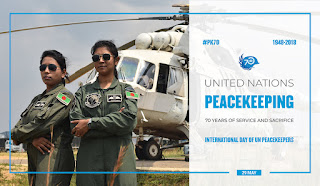ONUC (Organisation des Nations Unies au Congo) : What is it?
Organization des Nations Unies au Congo, abbreviation ONUC (Translation: The United Nations Operation in the Congo) was a United Nations peacekeeping force in Congo that was established after United Nations Security Council Resolution 143 of 14 July 1960. to June 1964, marked a milestone in the history of the United Nations peacekeeping in terms of the responsibilities it had to assume, the size of its area of operation and the manpower involved. It included, in addition to a peacekeeping force which comprised at its peak strength nearly 20,000 officers and men, an important Civilian Operations component. From 1963 the name changed to Opération des Nations Unies au Congo, keeping the same abbreviation. To generalise, the mission was a response to the Congo Crisis. ONUC was the UN's first peacekeeping mission with a significant military force, yet ONUC has been described as a "pyrrhic victory at best."
Following Security Council actions, the United Nations Force in the Congo (ONUC) was established. To carry out these tasks, the Secretary-General set up a United Nations Force, which at its peak strength numbered nearly 20,000. The UN Force stayed in the Congo between 1960 and 1964 and underwent a transition from a peacekeeping presence to a military force.
ONUC's main goals stayed consistent from the first to fifth resolution. It featured the double purpose of withdrawing Belgian military personnel (later expanding to mercenaries) and providing military assistance to ensure internal stability. The successive Security Council resolutions added to and elaborated on the initial mandate but did not fundamentally change the operation's objectives. These were especially significant because Belgium's invasion violated the norm of sovereignty, and the second objective was set to prevent the country from becoming a Cold War proxy state.
The first troops reached Congo on 15 July 1960, many airlifted in by the United States Air Force as part of Operation New Tape.
Prime Minister Patrice Lumumba, dissatisfied with Dag Hammarskjöld's refusal to use UN troops to subdue the insurrection in Katanga, decided to attempt an invasion of Katanga on his own and turned to the Soviet Union for help. The invasion attempt never reached Katanga but led to dissension within the Central Government, the collapse of the Central Government, and eventually to Patrice Lumumba's arrest in December. In February 1961, the legally elected Congolese leader Patrice Lumumba was killed, and only then did the United Nations Security Council explicitly authorize the use of force for purposes beyond self-defence.
Citation:
 |
| Swedish ONUC peacekeeper in the Congo |
Citation:
- https://www.un.org/Depts/DPKO/Missions/onucB.htm
- https://www.geni.com/projects/United-Nations-Congo-ONUC-Medal/39103
- https://en.wikipedia.org/wiki/United_Nations_Operation_in_the_Congo#/media/File:Swedish_UN-soldier_in_Congo.jpg

Comments
Post a Comment